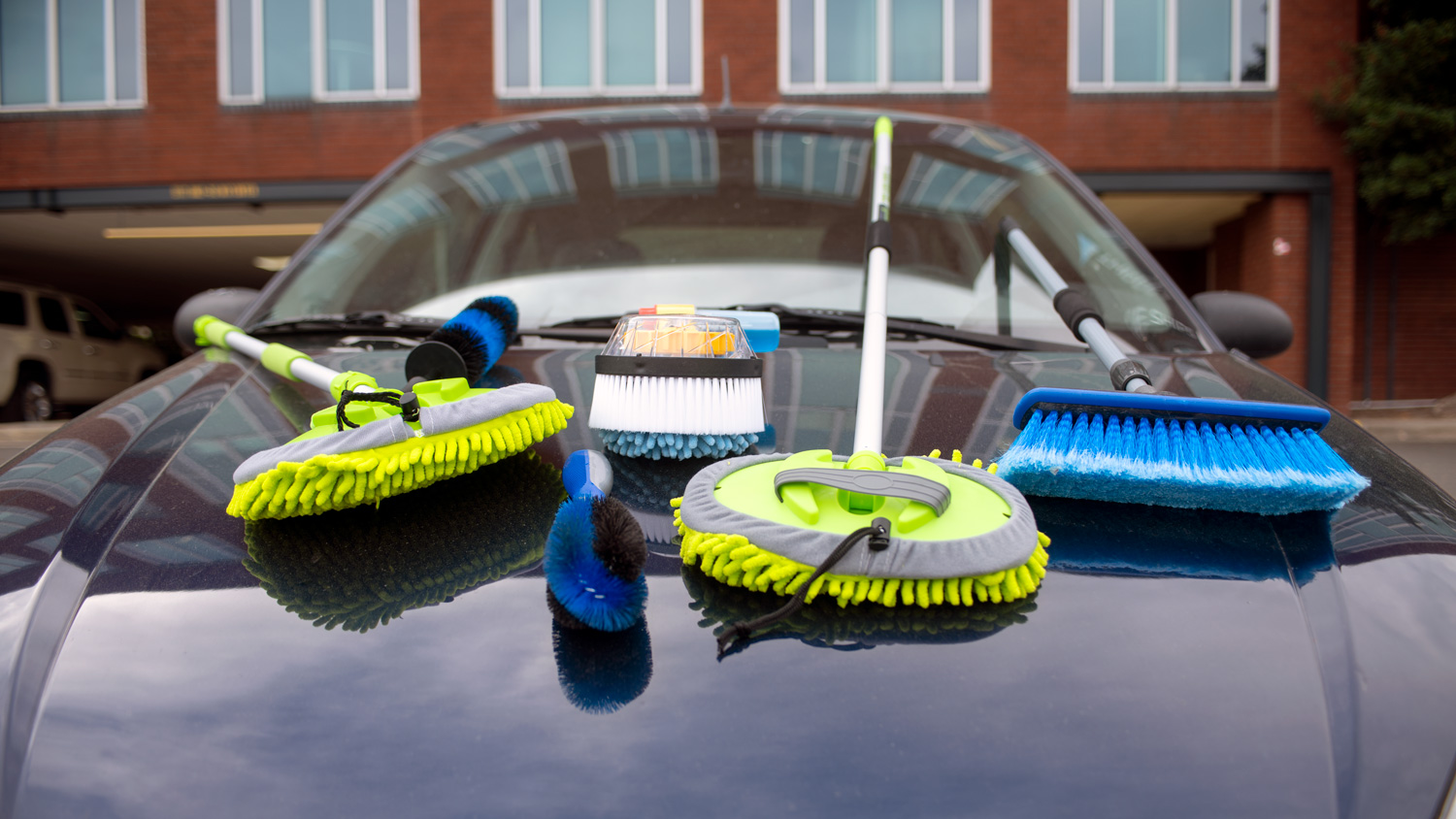
You'll need winter accessories for the winter months. You can choose from snow tires, but you also have block heaters, heated seats and heated steering wheels. These accessories will keep you warm and comfortable, as well as your passengers. You have the option to select from many different products so you are sure to find one that fits your needs. Continue reading for more information about these accessories.
Snow tires
It's common knowledge that snow tires can be helpful as winter car accessories. However, did know that they can also keep your car warm. Winter driving can be fun, but it can also pose danger if you don't know what to expect. The right winter car accessories will ensure that your passengers are safe and have fun. These are the top winter car accessories you should buy.

Heated seats
Heated seats can be useful if you live in colder climates. They can melt ice quickly thanks to the special liquid inside. This saves you time and money. If you have leather or vinyl seats in your car, you know how uncomfortable they are during winter. Heating seat covers are a great option if you want to drive comfortably and stay warm.
Block heaters
Canada is proud to have a block heater as a part of our culture. These simple devices are so easy to use that they have saved many engines from being damaged in the cold. They also make it easier for people to get to work on time. They are not necessary for all cars but they can prevent morning idling and maintain the engine block's condition. Learn more about block heaters. Once you've used one, you'll never want to go without it.
Heated steering wheel covers
A heated steering wheel cover is a great way to keep warm if you live in colder climates. These covers wrap around a steering wheel and provide heat lasting for 35 minutes. The battery's life expectancy is three hours. They are safe and simple to use. These accessories can be used all year. Drivers can also use them in the winter months when it is too cold to put on gloves.
Custom cargo trays
Custom cargo trays are great for winter driving. Custom cargo trays help you keep your car's cargo area clean and protected from the elements. Kia cargo trays can be customized for your vehicle and protect the cargo area from ice and snow. Another essential winter accessory is a snow and ice-scraper. The scraper comes with a telescoping handle that will allow you to move it around and clean your windows.

Reflective red triangles
A reflective triangle in red is essential for winter. The triangle can be placed 20 metres from the stalled vehicle to alert other drivers of the danger ahead. In December, 40 cars were left in pieces after a New York pileup. According to the police report, no warning triangle was discovered at the scene of the accident. It is never too early for you to start thinking about your next winter car accessory.
FAQ
How long does an apprenticeship in automotive mechanics last?
An automotive mechanic apprenticeship takes around three years to complete. This includes two years at school and two years working as an apprentice. The first year is used to learn all aspects of the trade including safety procedures and theory. This year, you will also learn how to safely and efficiently use tools. After you have completed the first year of training, you will be able to spend an additional year on-the job learning different trades. These years will offer you the opportunity to attend formal classes.
The final year of this program is spent in obtaining qualifications and becoming certified in your field. These include NVQs (National Vocational Qualifications), that are given after passing specific industry exams. There are also HNCs (Higher National Certificates), which cover general subjects like management, business administration, customer service, and more. City & Guilds certificates may be available for those who are interested in becoming qualified in specific trades.
What is the best way to learn about car mechanics
Auto mechanics don't require any knowledge. It's enough to know how to fix things. Most people start by fixing things like changing tires or fitting brake pads.
You'll need the ability to read and understand diagrams and to follow simple rules of good practise. You'll also need to be able to judge whether parts need replacing or repairing.
You should not attempt to fix vehicles without proper training and guidance. This is especially true for expensive components, such as transmissions and engines.
Even though you don't need to be an expert on cars, it is important to understand the fundamentals of mechanical engineering and physical physics. This will include understanding the basic principles of engine operation and brake function.
It is also important to remember that you will need to be able to handle many situations. One example is when you could be working on a vehicle involved in a serious crash. You will also need to be able to deal with accidents and breakdowns.
You must also be willing to learn quickly. It is important to be able both to diagnose problems and perform simple maintenance tasks, such as tightening nuts.
Is it worth learning to be a mechanic?
The answer depends on what you are looking for in life. If money is your goal, then you can answer "yes". But if you are searching for meaning and purpose, then you should not answer this question.
If you don't have any mechanics skills, then there's no point getting into it because you'll just end up wasting time. It will not make you rich. You won't become famous. And it's unlikely to change your life.
You'd need to spend years learning how everything works. Also, you would need to hire someone else to fix it if it broke down. Most people won't bother to do it. They find something better to do instead.
In conclusion, if money is your main goal, you should go ahead. You can't live a meaningful existence if your goal is to make a living in the mechanic's business.
What qualifications are required to become a mechanic
A series of tests is required to be a mechanic. These exams include:
-
A general knowledge assessment
-
A practical exam
-
An apprenticeship test
These tests are intended to make sure you have a solid understanding of the basics of mechanics before you can start your career as a mechanic.
Once you pass these tests you can become a mechanic. However, you'll still need to complete an apprenticeship. This will involve training in your trade.
You'll need to attend classes and workshops to learn everything you need to know about repairing vehicles. It will be necessary to work alongside experienced mechanics.
For mechanic success, you'll need to be focused and meticulous. Vehicle repairs require you to be very attentive.
To become a good mechanic, you need patience and persistence. If you don’t like following directions, then this career path may not suit you.
This job is for you if you are passionate about cars and love fixing them.
What kind of car mechanic jobs exists?
Car mechanics can find work in three areas:
-
Automotive repair shops
-
Dealerships
-
Independent garages
Automotive repair shops
This is where most people first think of becoming a mechanic. In fact, it's probably the easiest way to get started. You have two options: work in an existing shop or open your own.
If you decide to work at a shop, you'll need to apply to join a union. Once you have been accepted into the Union, you'll be given training by the union.
You'll be ready for work once you have completed the training.
Registering with the government is required if you intend to open a garage. You'll need to meet certain standards after you register.
Once you register, you'll receive a license that allows you to operate your garage.
Your license will allow you to sell spare parts and do minor repairs. It will not permit you to fix major engine issues.
Customers will expect you to not only sell spare parts but also provide advice and guidance.
Dealership jobs
Most dealerships only employ mechanics who have a specific skill set. For example, they might only deal with brakes or only replace tires.
Some dealerships hire general mechanics to handle all aspects of car repair.
These positions often require applicants that they undergo special training before being allowed work. This means employers can choose which candidates are best suited for their role.
Some dealerships recruit students right out of school. These graduates already have a basic understanding of mechanical engineering, so they are able to learn all about cars.
Independent garages
Independent garages aren't associated with any particular dealership. Instead, independent garages tend to concentrate on providing high-quality services.
Independent garages are not associated with any companies so they can afford higher wages. As a result, these jobs are generally better paid than those at dealerships.
However, independent garages do not necessarily offer better workplaces. Many business owners prefer to own their businesses and not delegate the responsibility to others.
This could lead to you working long hours with little control over your day.
Also, expect to make lower wages than if your job was at a dealership.
The good news is that you can easily switch between different kinds of jobs. If you want to work at a dealership, then you simply need to ask your current employer if he would consider hiring you as a mechanic instead.
You could also apply directly to an owner of a garage if that's what you want.
It's not always easy to find a job. Many other factors can also influence the amount you earn.
You might also consider the vehicle type you repair, and whether extra labor is charged.
How do I prepare for a mechanic apprenticeship?
It is important that you understand the ramifications of your actions. It is important to know the basics of how cars work. This will allow you to be prepared for your first day at work.
Also, you need to know how fix simple problems, such as tires and lights that aren't working.
This will teach you how to diagnose problems and fix them yourself.
To put the pieces back together, you will also need to understand how they fit together.
Finally, you need to be able to safely and efficiently use tools.
All these things will help you to become a competent mechanic.
Statistics
- The U.S. Bureau of Labor Statistics (BLS) reports that the job outlook for automotive service technicians and mechanics is expected to decline by 4% from 2019 to 2029. (indeed.com)
- There were 749,900 jobs available for automotive service technicians and mechanics in 2016, which is expected to grow by six percent through 2026. (jobhero.com)
- 52% of Mechanics in the United States think their salaries are enough for the cost of living in their area. (indeed.com)
External Links
How To
How to properly diagnose your vehicle for repair
To determine if your car needs repairs, you should first look at the symptoms that your car presents. Follow these steps to properly diagnose your vehicle.
-
Check engine lights. Make sure to check all dashboard indicators like the engine light indicator (oil pressure gauge), the battery indicator (battery light indicator), and the RPM indicator (rpm gauge). It could indicate that your vehicle is having problems.
-
Inspect the tire treads. Tires can become worn and cause problems in handling and braking. You should also inspect the wheel treads. They should be clean and smooth. To do this, remove the wheels and take them out. You can check the tread wear with a flashlight.
-
Pay attention to the level of your brake fluid. You should always keep track of the amount of brake fluid in your vehicle. This helps ensure that your brakes operate properly. If the brake fluid level is low, your brakes might fail when you apply pressure to them.
-
Test the suspension system. A suspension system is designed to absorb vibrations and shocks. It improves control and allows for smoother accelerations or decelerations. If your vehicle has a suspension problem, it might feel wobbly or shake uncontrollably. If you are unsure if your vehicle is suffering from a suspension problem, put weight on the front and rear axles to check the movement.
-
Examine the steering column. The steering columns are what connect the steering knob to the rest. Steering columns can be damaged by accidents. Replace it if your steering column feels loose or unsteady.
-
Observe the exhaust pipe. Exhaust pipes move gases from combustion chamber to atmosphere. Your cabin will be effected if your exhaust pipe cracks or leaks. You should also fix any bent tailpipes immediately.
-
Take a look at the underside of your hood. Look underneath your hood to see if anything looks strange. There could be fluid leaking from your engine. Also, professional technicians should be called if you detect an unusual smell coming out of your engine compartment.
-
Check the air filter. The air filter in your vehicle collects dirt and dust from the environment. A dirty air filter causes your vehicle to run poorly. Replace your air filter regularly.
-
Check the fan belt. The fan belt is the link between the engine and the transmission. If the fan belt fails, the engine won't start. The process of replacing the belt is straightforward. All you need to replace the belt is a screwdriver with pliers.
-
The radiator hose and hoses should be checked. The radiator-hose carries water to the engine. If the hose becomes damaged or cracked, hot liquid can be emitted onto the engine. You only need a pair of needle-nose pliers and a small wire brush to repair the hose.
-
Check the windshield wipers. Windshield wipers use electricity to wipe away rain and snow. They can leave streaks on your windows glass if they stop working. You can fix the problem by changing the washer fluid.
-
Check the battery cables. The battery cables provide power for the electrical systems in your car. Always disconnect the negative wire before you replace batteries. Failure to do so can damage your alternator.
-
Check the headlights. Headlights help you see the road ahead. They can make it difficult to see if they stop working. Inspect the bulbs for signs of burnt out.
-
Check the lights. You can warn other drivers if you approach them at night. You may be distracted by the light and end up in an accident.
-
You should inspect your brakes. Before you get in a car accident, your brakes will be slowing down your vehicle. You may lose control of your vehicle and crash if the brakes don't function properly.
-
Check the oil regularly. Keep your engine lubricated with oil. It helps keep metal parts from getting too worn down. It is recommended to change the oil each month.